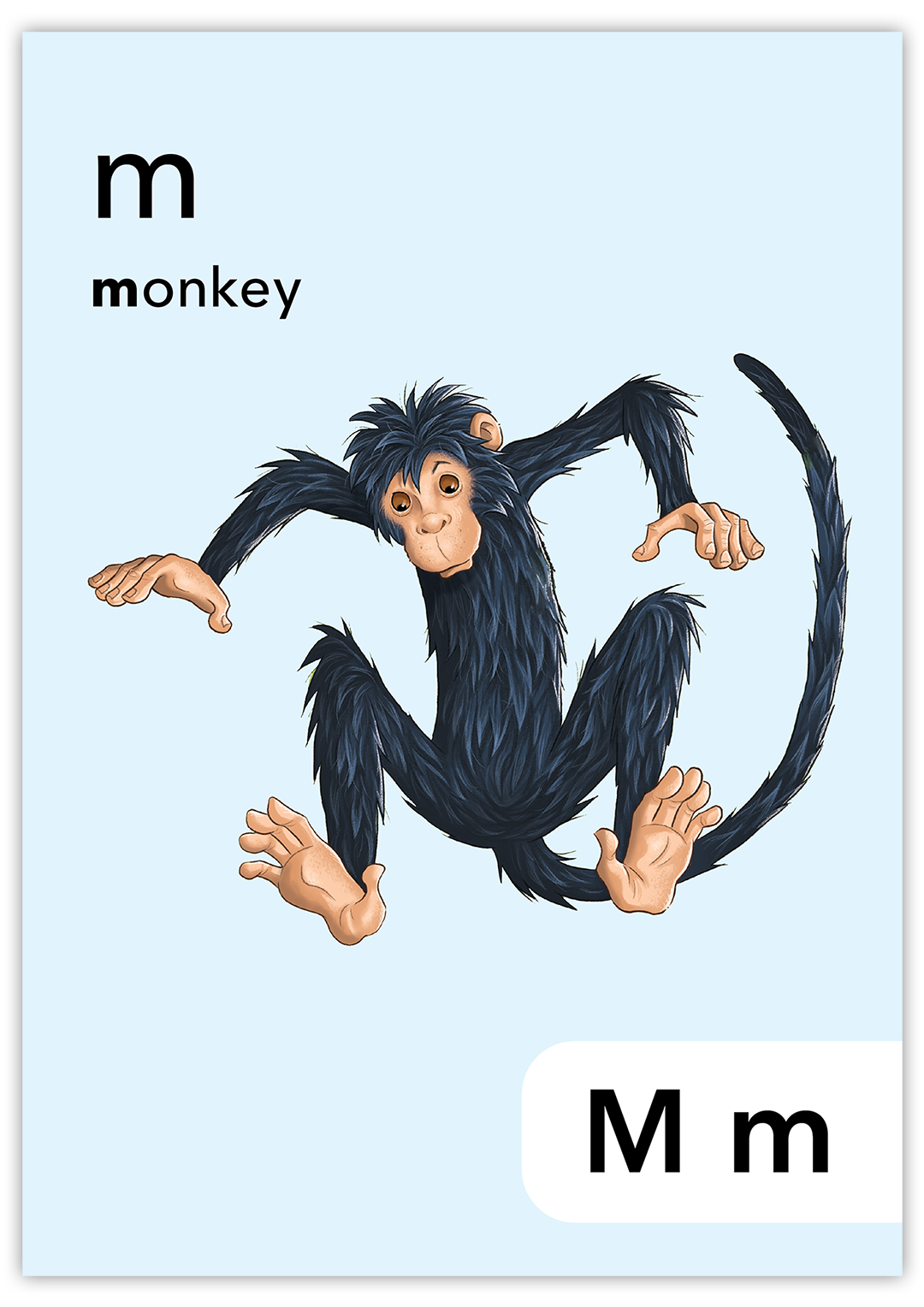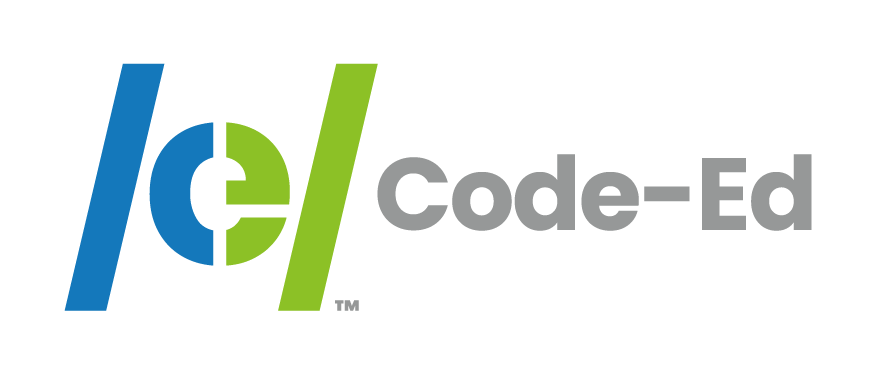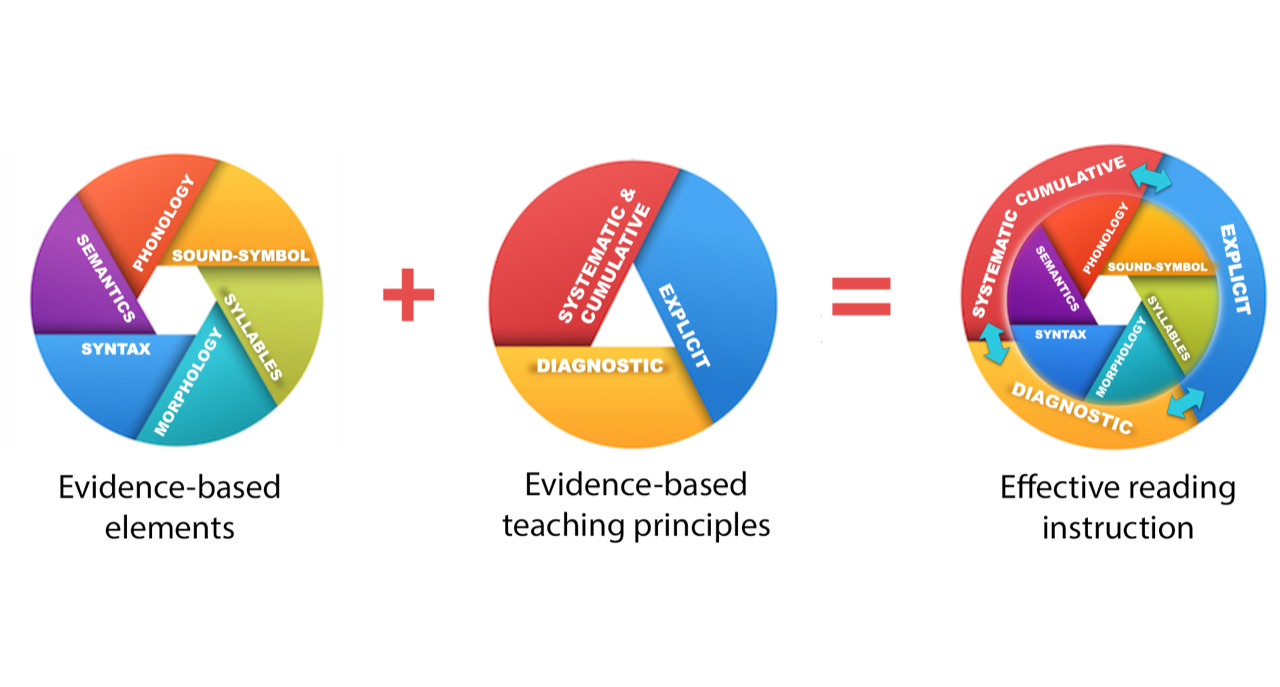In the same way that numerals are the abstract symbols we use to represent specific quantities, letters are the abstract symbols we use to represent the sounds in words. This relationship between these symbols and the sounds they represent is known as the alphabetic code. Understanding it is the key that unlocks literacy learning.
Take the numeral 2, for example. The numeral itself is a written symbol that has a name, “two.” Both the written symbol and the word stand for a specific quantity of objects that can be counted.
Similarly, the letter T is a written symbol. It has a name, pronounced “tee,” and stands for a sound, pronounced /t/. It can also be combined with other letters to represent different sounds, such as /th/.
One of the keys to becoming mathematically literate is to learn the numerals (written symbols) and names (number words) associated with specific quantities. Likewise, one of the keys to becoming a reader and writer is to learn to recognize letters (written symbols), to name them (letter names), and to associate them with the sounds they represent (letter-sound correspondences).

Knowing how to recognize and name the letters of the alphabet is a necessary skill, but it is not sufficient for literacy development. Students must also learn that letters represent the sounds of spoken language.
Being able to recognize the letters of the alphabet and knowing how to link them to a sound or sounds is the key for learning to read and write words. Learning to decode words depends on this knowledge being in place.
The large body of research behind the Science of Reading is unequivocal about the need for students to learn to decode words accurately and efficiently as their first line of attack when reading unfamiliar words. However, before they can learn to decode a text independently, students need to possess the essential knowledge and skills that enable them to decode.
Because English is a complex alphabetic language, we need to provide scaffolded, systematic instruction and practice in the key foundational skills that support decoding. Instruction to support and teach decoding skills should begin at the Pre-K level and continue until students are fluent and accurate decoders.
“A prerequisite set of skills for learning to read includes decoding and segmenting words into phonemes. So, the more the child is exposed and systematically taught to listen to sounds, the more effective he or she becomes at spelling, reading and comprehension.”
What key foundational skills support decoding?
To decode a word, students need to be able to recognize and pronounce the graphemes (letters and letter patterns) in the word and to blend the sounds together to pronounce the word.
Decodable readers have been developed to scaffold the decoding process, but before children are ever asked to decode words, they need to have mastered certain key foundational skills, including:

-
An understanding of how books and print work
They need to be familiar with how books work, and to know that the text represents the words we say. -
An understanding of the alphabetic principle
They need to know that the words we say are made of sounds and that these sounds can be written with alphabet letters. -
The ability to blend sounds in words
They need to be able to blend sounds together to pronounce words. -
Alphabet knowledge
They need to be able to recognize every letter of the alphabet and be able to pronounce each one in at least one way.
Why is alphabet knowledge important?
Many research studies have shown that alongside good phonological awareness and general language skills, being able to recognize and name the letters of the alphabet and link them to sounds at school entry has a high correlation with later reading success.
According to the National Assessment of Educational Progress (NAEP), around 40% of children can identify most letters by the end of Kindergarten, and 80% by the end of Grade 1, which means that a significant percentage of children in grades K and 1 lack the prerequisite knowledge they need for learning to decode words.
Alphabet knowledge — being able to identify letters and link them to sounds — needs to be in place for 100% of students before they are taught to decode.
The names of letters, in themselves, are not particularly useful in the process of reading and writing. In fact, unless letter-sound relationships are taught explicitly, letter names can cause confusion for young learners. Many children use the name of the letter to provide its sound, saying /d/ for d (“dee”), /k/ for k (“kay”), but also /d/ for w (“double-u”) and /w/ for y (“why”). Of the 26 letters of the alphabet, only nine consonants provide a reliable letter-sound connection with their name (b, d, j, k, p, q, t, v, z). The five vowel letters provide a pronunciation for long vowel sounds (/ā/ /ē/ /ī/ /ō/ /ū/) but not for short vowel sounds and other pronunciations.
Given the importance of alphabet knowledge, we do want children to be able to recognize and name the letters of the alphabet, but we do not want them to use letter names as a strategy for generating letter-sound connections.
Letter recognition and letter-sound connections need to be taught together and explicitly.
If we don’t do this, many students will use their knowledge of letter names to work out letter-sound correspondences — a strategy that often gives the wrong information.
If there are gaps in alphabet knowledge at the start of kindergarten, they need to be identified and filled, first and fast.

How can we teach the key foundational skills for reading in our Pre-K classrooms?
We can provide explicit and systematic instruction in key foundational skills before formal instruction in decoding words.
This will empower students to approach reading with confidence and enthusiasm.
We can check that students can recognize and name alphabet letters, link letters and sounds, blend sounds, and understand how letters and words work.
This ensures that students have the tools they need for understanding and working with the alphabetic code.
We can read to students — a wide variety of wonderful books, to generate excitement and curiosity about reading.
This is the motivation for learning to read.
We can read with students — a wide variety of wonderful books that model how books, words, and letters work, and that stimulate thinking to make connections between the book, ourselves, and the world.
This builds the platform for successful reading instruction.
We need to teach the key foundational skills for reading before students begin their independent reading journey. This sets the stage for success, which fosters a lifelong love of reading.

About the author
Joy Allcock is an author, educator, and researcher with a career in education spanning nearly three decades. She has led a number of research projects aimed at improving literacy outcomes for all students, out of which have grown a variety of instructional resources for using the code of English to support reading, writing, and spelling. Allcock’s well-known research, resources, and professional development workshops have led to multiple invitations to speak at international conferences and to collaborate on projects and publications for the New Zealand Ministry of Education. Allcock’s research-driven approach to mastering the intricacies of written English has left an indelible mark on students and educators globally, and her unwavering dedication to advancing literacy has elevated educational experiences worldwide.
Read more at JoyAllcock.com.

About Code-Ed Ltd.
Code-Ed Ltd. is a New Zealand-based company that specializes in developing educational resources that demystify the way written English works to make it accessible for all teachers and students by explicitly teaching the alphabetic code, the meaning system, and the most reliable spelling rules and conventions of English. Using a linguistic approach developed by author, educator, and researcher Joy Allcock, the Code-Ed resources build a bridge between research and practice, ensuring that teachers have access to evidence-based methods that really work.





